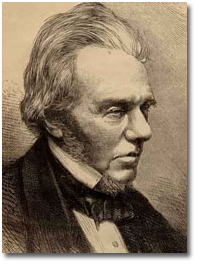Michael Faraday
 The credit for generating electric current on a practical scale goes to the famous English scientist, Michael Faraday. Faraday was greatly interested in the invention of the electro- magnet, but his brilliant mind took earlier experiments still further. If electricity could produce magnetism, why couldn't magnetism produce electricity? In 1831, Faraday found the solution. Electricity could be produced through magnetism by motion. He discovered that when a magnet was moved inside a coil of copper wire, a tiny electric current flows through the wire. He discovered, in essence, the first method of generating electricity by means of motion in a magnetic field, yet Otto Von Guericke made the first electrical machine, the frictional machine, by which a glass ball of sulphur became electrified by rotating rubber.
Davy, who had the greatest influence on Faraday's thinking, had shown in 1807 that the metals sodium and potassium can be precipitated from their compounds by an electric current, a process known as ELECTROLYSIS.
Faraday's vigorous pursuit of these experiments led in 1834 to what became known as Faraday's laws of electrolysis. Faraday's research into electricity and electrolysis was guided by the belief that electricity is only one of the many manifestations of the unified forces of nature, which included heat, light, magnetism, and chemical affinity.
Although this idea was erroneous, it led him into the field of electromagnetism (see MAGNETISM), which was still in its infancy. In 1785, Charles Coulomb had been the first to demonstrate the manner in which electric charges repel one another, and it was not until 1820 that Hans Christian OERSTED and Andre Marie AMPERE discovered that an electric current produces a magnetic field.
Faraday's ideas about conservation of energy led him to believe that since an electric current could cause a magnetic field, a magnetic field should be able to produce an electric current. He demonstrated this principle of INDUCTION in 1831. Faraday expressed the electric current induced in the wire in terms of the number of lines of force that are cut by the wire. The principle of induction was a landmark in applied science, for it made possible the dynamo, or GENERATOR, which produces electricity by mechanical means.
|